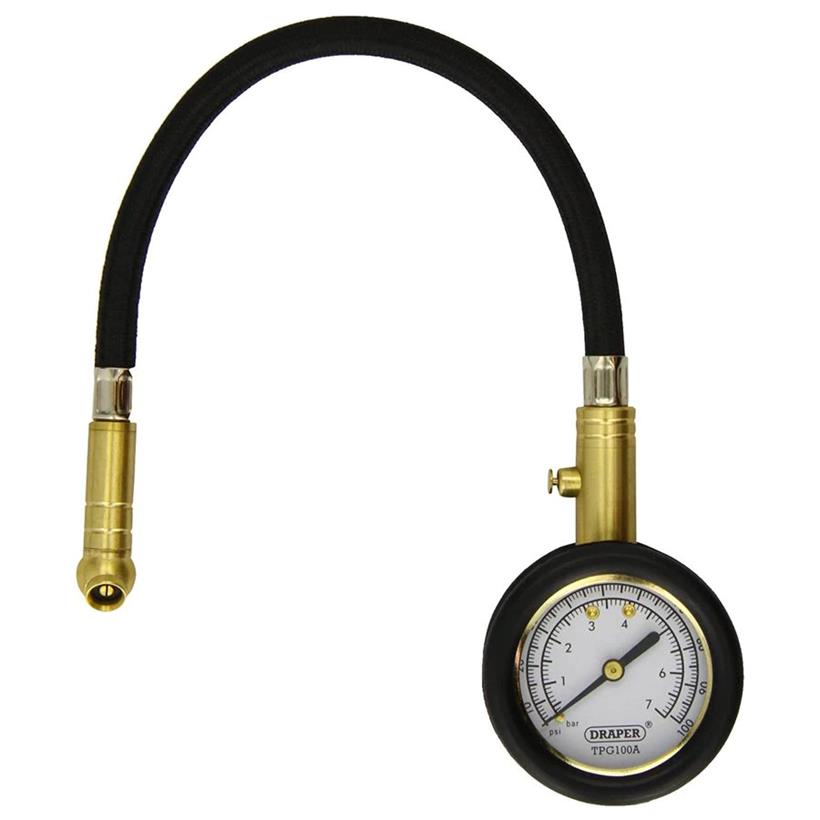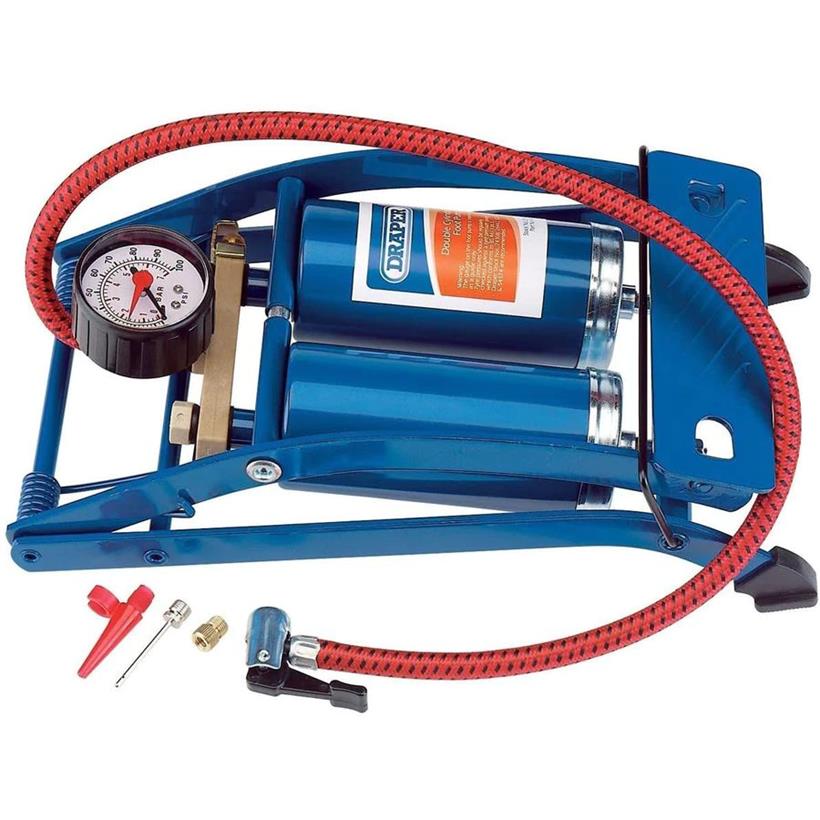How To: Look After Your Motorbike's Tyres
Looking after your motorbike tyres doesn’t take a lot of time and effort, but it’s a crucial part of motorcycle ownership that shouldn’t be overlooked.
Years ago, there was much talk in the car world about tyres and the fact that, at the time, a car’s average contact patch with the planet was around the size of a sheet of A4 paper. For motorbike tyres, it’s much less than that: this fact should give you an idea of just how important tyres are.
They are the only connection between your bike and the road, and they have to transmit all of the forces that the bike generates – acceleration, braking and cornering – as well as soak up some of the imperfections on the road surface.
There are different types of motorbike tyres for different types of bikes but all do one job – generate grip between the surface and the bike to transmit those forces we were talking about. These range from racing slicks designed to work on dry racetracks to knobblies, intended for off-road bikes to generate grip and traction from the loosest or muddiest of conditions.
The size of the bike’s wheels will also affect what motorbike tyres you can use. Many off-roaders will have a 21in front wheel, which allows a wide range of proper off-road tyres to be used. Many road-based bikes will use 19in or even 17in wheels that allow a greater variety of sportier tyres for maximum grip and performance.
Related: Best motorcycle tyre deals
However, whatever tyres you have on whatever bike, they all need some maintenance to make sure they will do their job properly. Here’s how…
Step 1:
The first check you need to make regularly – at least weekly – is the tyre pressure. How this should be measured will be specified in the handbook, but it is usually measured cold (ie the bike hasn’t been used for some time) and the owner’s handbook will specify pressures for a solo rider as well as with a pillion
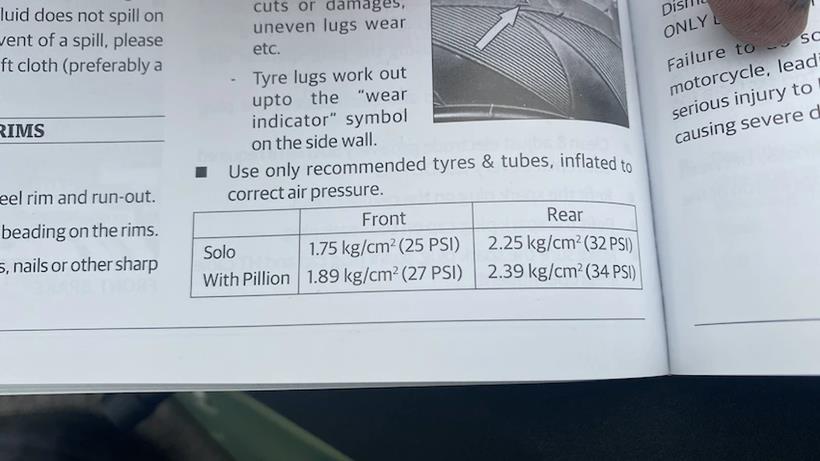
Step 2:
Using a pressure gauge, check the pressures in both tyres. We use a decent quality gauge to check the pressure and a track pump to add air as necessary. This will ensure the tyre is in the correct shape to offer optimum grip on the surface at all times.

Step 3:
The next thing to do is have a look around the tyres for signs of damage. Look at the profile and make sure it is consistent and there are no splits or bulges, for example, that can arise if you hit a pothole.
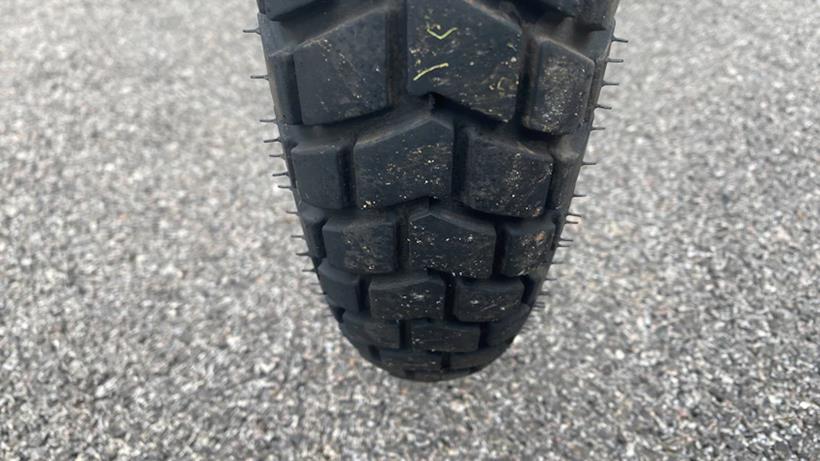
Step 4:
Look at the surface of the tyre to make sure that there are no indications of something amiss.
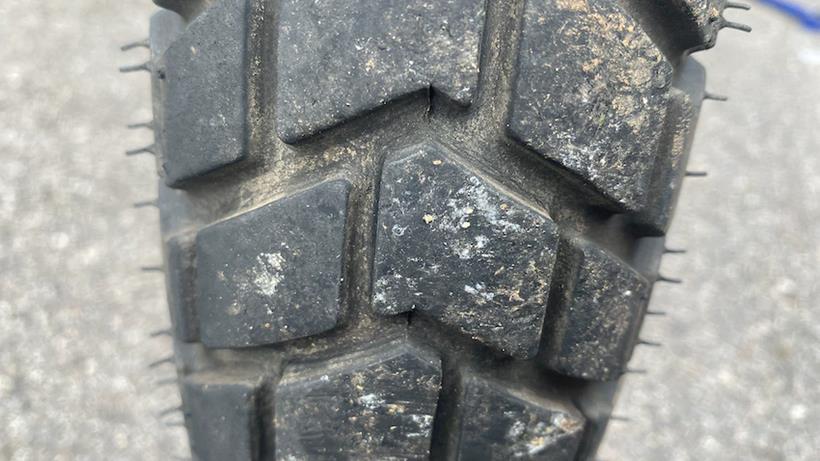
Step 5:
These sports-touring motorbike tyres developed cracks across the centre of the tread pattern. They were shallow and didn’t seem to affect the handling of the bike. They were changed once this trip was over, as a precaution.
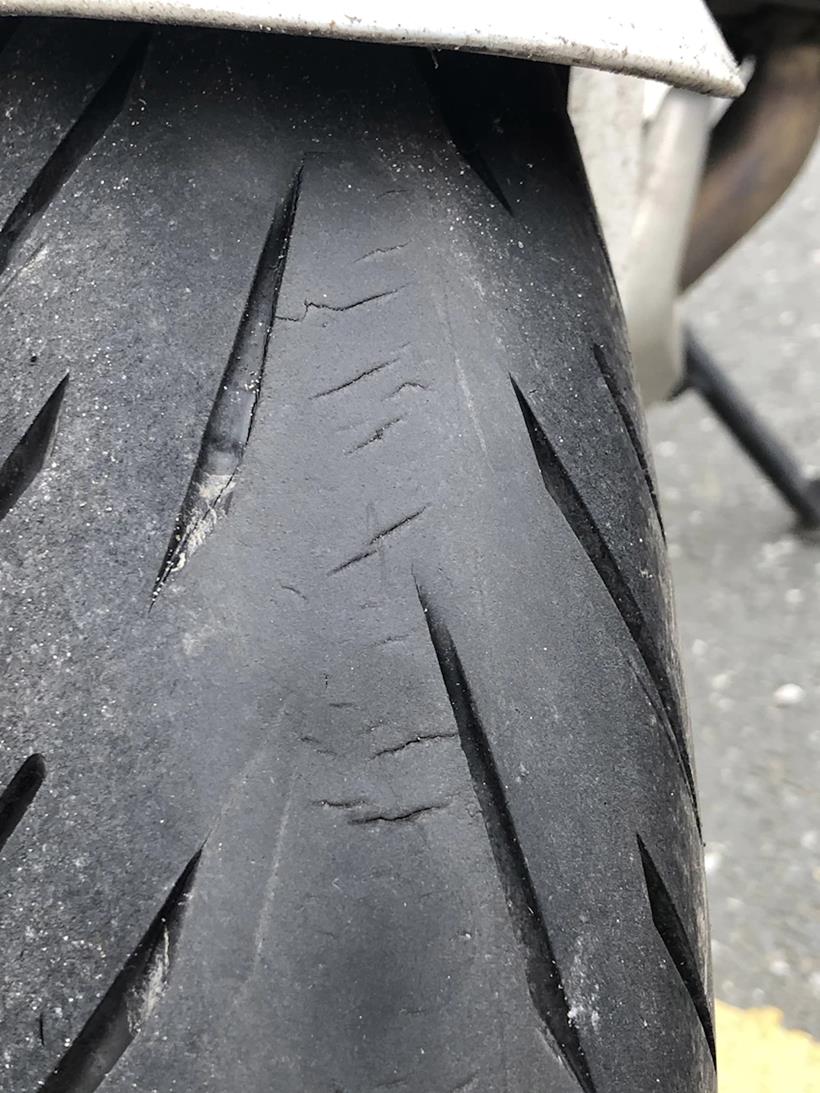
Step 6:
Generally, the rear tyre will wear much faster than the front and will begin to go ‘square’ where a flat section develops in the centre of the tread, as the bike spends most of its time in a straight line and on the centre of the tread. Compare this rear with the front in step 3 and you can see that it is beginning to develop a flat section, though there is life in it yet…
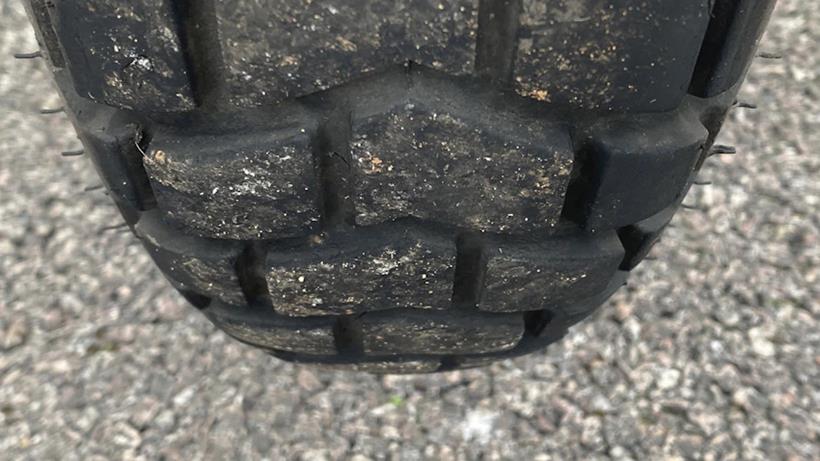
Step 7:
Having made sure the tyres appear in good condition, you need to check the tread depth. The minimum legal requirement for motorcycles is 1.0mm across a continuous band ¾ of the tyre’s tread width. The smooth side-edge on a 20p piece is 1.6mm wide (the limit for car tyres) and this can be used as a rough gauge to the tread depth for your bike if you don’t have a depth gauge.
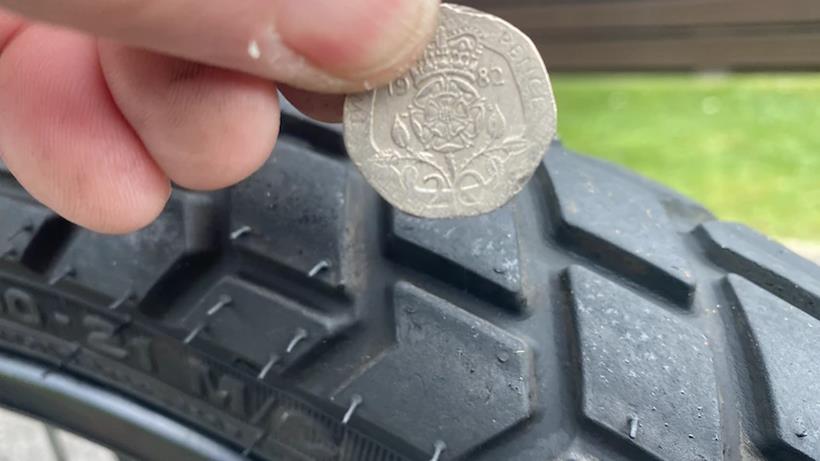
Step 8:
Put the 20p piece in the groove of the tyre in the tread or against the tread block to ensure that you can’t see the edge. If you can’t then the depth is greater than 1.6mm and all is good. If you can see the edge, then you know that the depth is less than 1.6mm and is getting close to the 1.0mm limit, so it’s time for a replacement tyre.
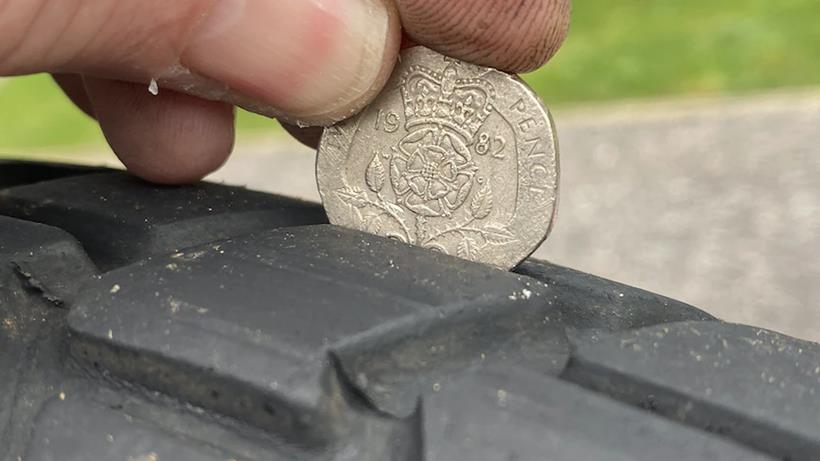
Step 9:
Check the depth across the width of the tyre at the front and the back. Here, you can see that the centre of the rear tyres is less than the edges, indicating it is beginning to wear but it’s still around 1.6mm. There is still life in it but as it becomes squarer, the handling will suffer as a result.
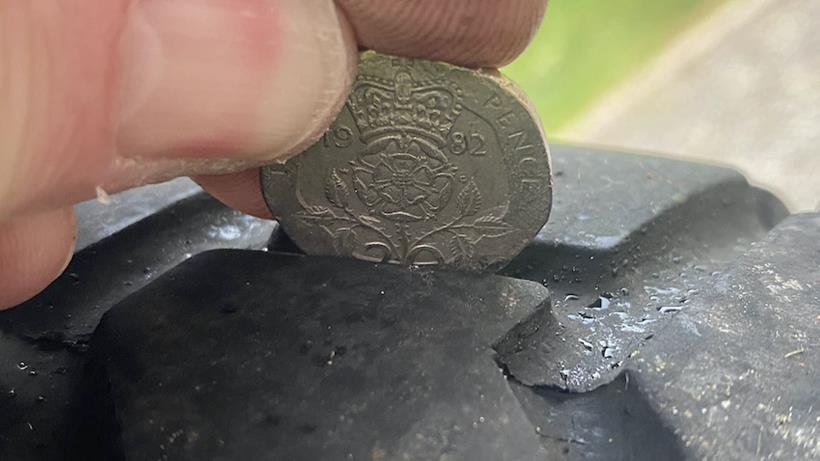
Step 10:
Having physically checked the tyres, you also need to be aware of their age. For some riders, who perhaps use their bikes for part of the year then store them and don’t put loads of miles on the tyres and hence, it may take years before they are worn sufficiently to require replacement.
Related: Best home motorcycle tyre changing kit
However, the tyre industry generally recommends that tyres are not used for more than five years from their date of manufacture, which is shown on the tyre. This example was manufactured in the 8th month (August) of (20)21

Step 11:
The markings on the side of motorbike tyres specify its size. This means the tyre is 90mm wide and has a 90% aspect ratio, i.e. the height is 90% of the width. The 21 is the wheel diameter in inches and M/C means it is a motorcycle tyre. The 54S indicates the load and speed ratings; 54 corresponds to a maximum load of 212kg and S means a maximum speed of 180km/h.
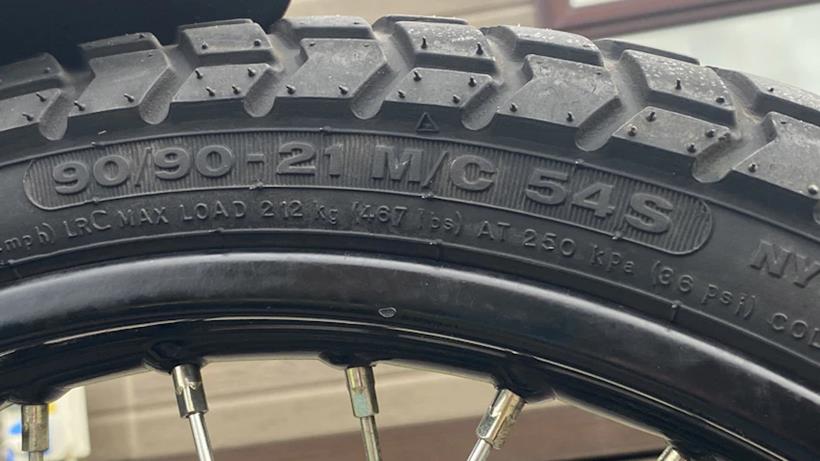
Step 12:
The rear tyre is a different size, as is common. It is wider, as it has to transmit acceleration forces unlike the front and has a higher load rating (64 represents 280kg) since it supports more of the rider, pillion and luggage weight than the front.
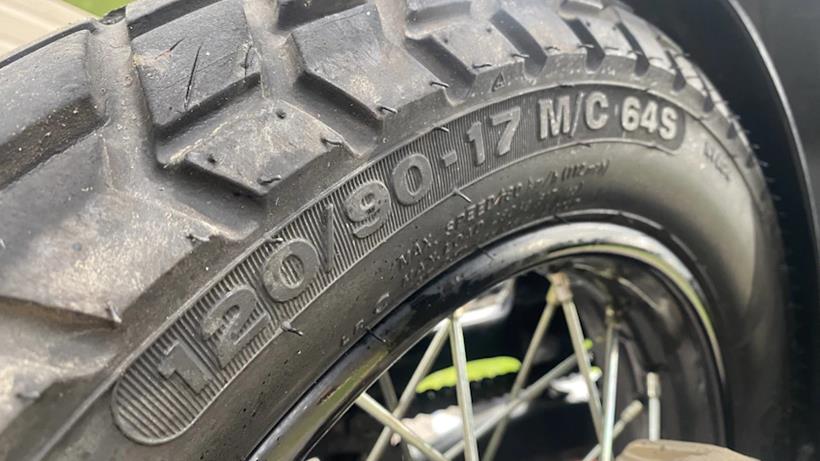
Step 13:
The direction of rotation is also important, to make sure it generates the right level of grip and water clearance, for example. If it’s wrong, the tyre will not only handle incorrectly but the bike should also fail its MoT.
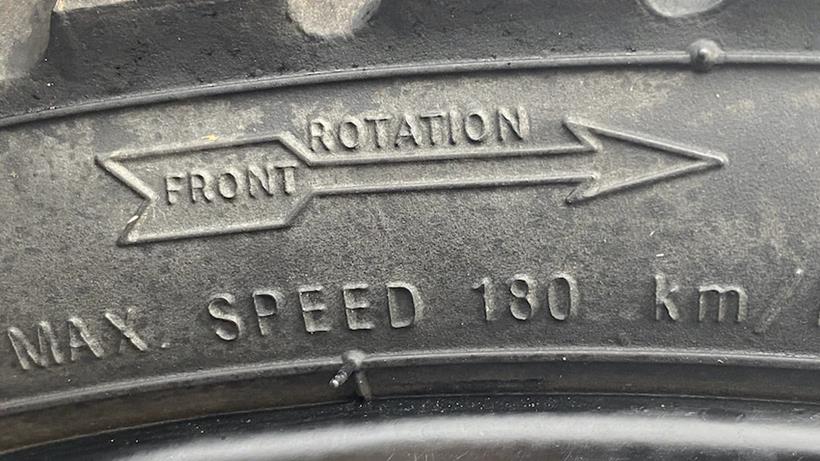
Step 14:
This is a typical sports-touring tyre. It features a smooth tread profile with drainage channels to clear water to maintain maximum tread contact with the road surface and hence, generate grip.

Step 15:
This is a typical adventure road tyre, in a proportion of around 80/20, i.e. it is intended for 80% of its time on the road and 20% off-road. It has larger grooves to clear water away from the surface of the road in the wet but also help disperse loose gravel and mud when used for light off-road riding.
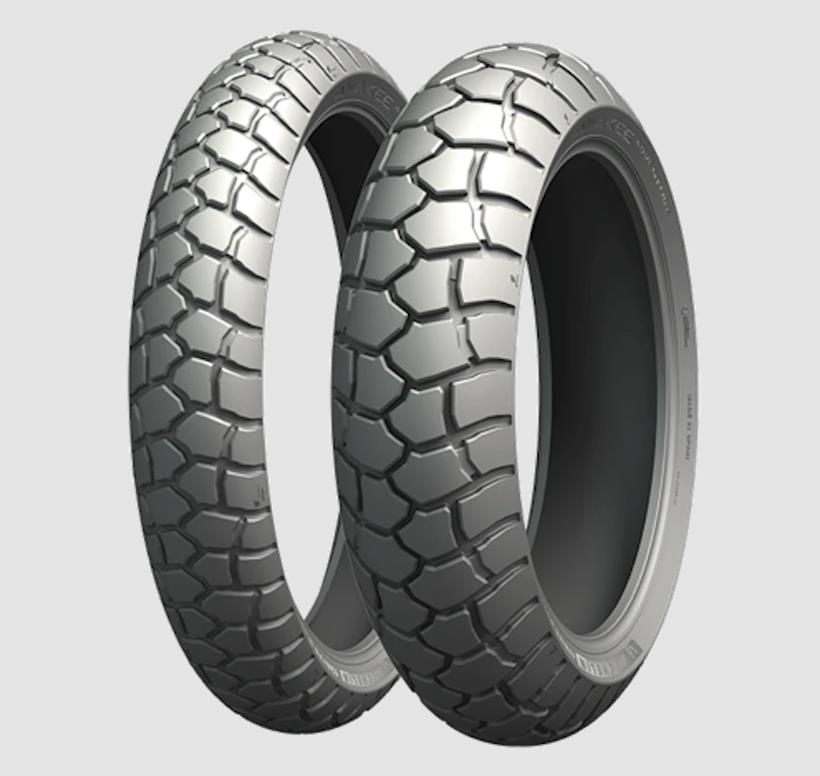
Step 16:
These are ‘knobblie’ tyres, for more serious off-road riding, with huge channels between large and distinct tread blocks.
They generate grip on loose or muddy surfaces and clear debris away from the contact areas but the tread blocks can move around if the bike is used on the road and this can give a disconnected and vague feeling, compared with tyres like those in steps 14 or 15.
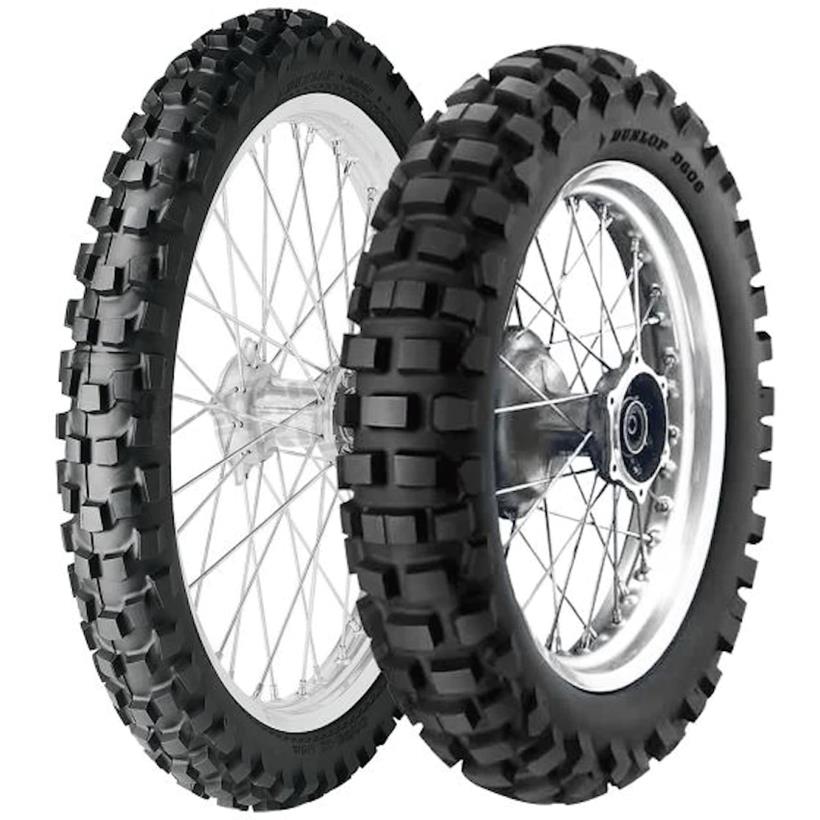
Motorcycle tyre accessories:
What to read next:
Best motorcycle tyre pressure gauges
Best garage door defenders and security
Cut through the jargon with MCN’s tyre explainer video:
- Just so you know, we may receive a commission or other compensation from the links on this website - read why you should trust us.
